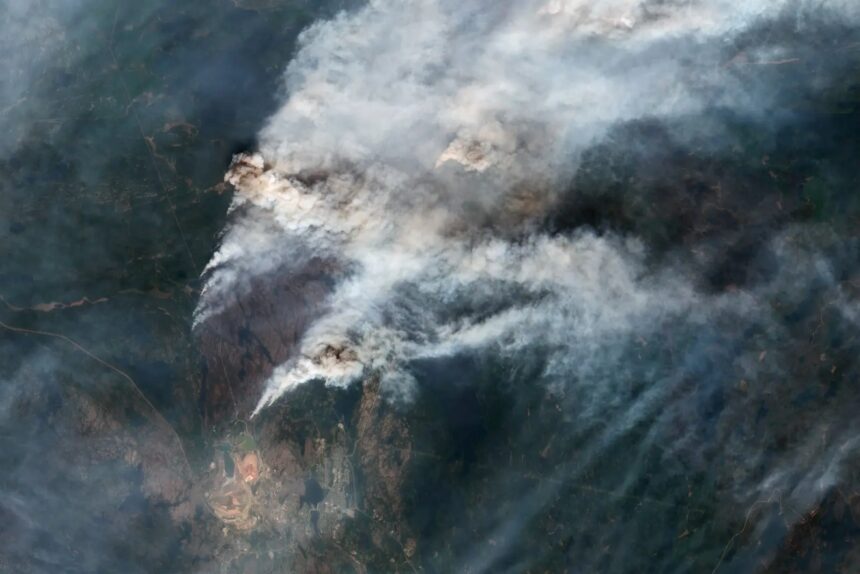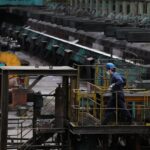My boots sink into the ash-dusted moss as I walk through what remains of the pine forest outside Yellowknife. It’s been nearly two years since the devastating 2023 wildfire season, but the scars on this landscape tell a story that’s far from over. The air still carries a faint metallic taste that locals have come to recognize as different from the “normal” wildfire smoke they’ve endured for generations.
“It’s not just wood burning anymore,” says Dene elder Harriet Wegner, gesturing toward the horizon where a shuttered gold mine sits just 5 kilometers from the recovering forest. “Our people can tell the difference. This smoke makes your eyes burn differently, your throat feels strange.”
New research from scientists at the University of British Columbia confirms what Wegner and other Indigenous knowledge keepers have been saying: Canada’s increasingly intense wildfires aren’t just burning trees—they’re releasing decades of industrial contaminants trapped in soil, vegetation, and watersheds near mining operations.
The study, published last month in Environmental Science & Technology, analyzed particulate matter from wildfires that burned near active and abandoned mining sites across Northern Canada. Researchers found elevated levels of arsenic, mercury, and other heavy metals in smoke plumes—sometimes at concentrations up to 15 times higher than in typical forest fire smoke.
“We’ve been approaching wildfire smoke as primarily a carbon and particulate matter problem,” explains Dr. Mei Lin Wong, the study’s lead author and environmental toxicologist at UBC. “But as fires burn hotter and move into previously industrial areas, we’re dealing with complex chemical cocktails that human lungs have never evolved to handle.”
For communities across Canada’s resource-rich northern regions, this emerging threat compounds an already dangerous situation. The 2023 wildfire season burned over 18.5 million hectares—more than double any previously recorded year, according to Natural Resources Canada. Climate projections suggest similarly catastrophic fire seasons will become increasingly common.
I visited Yellowknife in early May, just as residents were preparing for what meteorologists predict could be another record-breaking summer. At the Stanton Territorial Hospital, respirologist Dr. Anna Cheung showed me a newly expanded respiratory clinic designed specifically for the growing number of patients with wildfire-related health complaints.
“We’re seeing unusual symptom patterns,” Cheung tells me as we tour the facility. “Patients who’ve lived with normal asthma for decades suddenly experiencing neurological symptoms or persistent skin rashes after heavy smoke exposure. Traditional treatment protocols aren’t always effective.”
Health Canada has yet to update its wildfire smoke exposure guidelines to account for these mining-related toxins, though spokesperson Jean-Philippe Levesque confirmed via email that the agency is “actively reviewing emerging evidence on complex chemical profiles in wildfire smoke” and expects to issue new guidance before next year’s fire season.
For the Yellowknives Dene First Nation, waiting for updated government guidelines isn’t an option. The community has launched its own air quality monitoring program that incorporates both Western scientific measurements and traditional knowledge.
“Our connection to this land goes back countless generations,” says Wegner as she shows me a community-built air monitoring station decorated with traditional artwork. “We know when something isn’t right. Now we’re gathering the data to prove it.”
The air quality station sits on a small hill overlooking Giant Mine, a gold mining operation that closed in 2004 after nearly 50 years of production. During its operation, the mine released over 20,000 tonnes of highly toxic arsenic trioxide dust into the surrounding environment, according to federal assessment reports. The federal government is now managing a $1 billion cleanup expected to take until 2038.
The Yellowknives Dene’s monitoring has detected arsenic spikes in the air during both the 2023 wildfires and smaller blazes this spring. While levels haven’t exceeded emergency thresholds, the consistent presence of mining-related toxins worries health officials like Dr. Cheung.
“We’re particularly concerned about vulnerable populations—elders, children, pregnant women, and those with pre-existing conditions,” she explains. “The health effects of chronic low-level exposure to these complex contaminants just aren’t well understood.”
The problem extends beyond Northern Canada. Mining operations dot landscapes across British Columbia, Ontario, Quebec, and other provinces experiencing increased wildfire activity. Environment and Climate Change Canada estimates that over 10,000 abandoned mines exist across the country, many with limited remediation.
At the University of Toronto’s Dalla Lana School of Public Health, environmental health researcher Dr. Shelby Yamamoto has begun tracking hospital admissions in communities downwind from wildfires burning near mining sites.
“Preliminary data shows a 27% increase in emergency room visits for unexpected symptoms like neurological issues, compared to communities exposed to similar levels of wildfire smoke from areas without mining history,” Yamamoto explains. “It’s still early research, but the correlation is concerning.”
For communities already on the frontlines of climate change, this additional health threat feels overwhelming. In Yellowknife, local officials have started incorporating mining toxin considerations into evacuation plans and public health messaging.
“We’re telling people it’s not just about the Air Quality Index anymore,” says Patricia Nakahara, Yellowknife’s emergency preparedness coordinator. “If fires are burning near known contaminated sites, we recommend taking extra precautions even when general air quality readings are moderate.”
These precautions include using HEPA air purifiers, wearing N95 masks instead of cloth or surgical masks, and limiting outdoor activity—measures that place additional economic burdens on northern communities already struggling with high costs of living.
Back in the burned forest with Harriet Wegner, I watch as she carefully collects samples of ash and plant material for the community’s monitoring program. Despite the challenges, she remains determined to protect her community through a combination of traditional knowledge and modern science.
“Our ancestors couldn’t have imagined fire smoke carrying poisons from the mines,” she says, sealing a sample container. “But they taught us to adapt. To watch the land closely and understand what it’s telling us. That wisdom is more important now than ever.”
As Canada braces for future fire seasons, researchers like Wong and Yamamoto emphasize the need for interdisciplinary approaches that combine atmospheric science, toxicology, and Indigenous knowledge. Their work highlights an urgent reality: as climate change intensifies natural disasters, it also changes their fundamental nature—turning familiar threats into complex new challenges for which we are not yet prepared.






